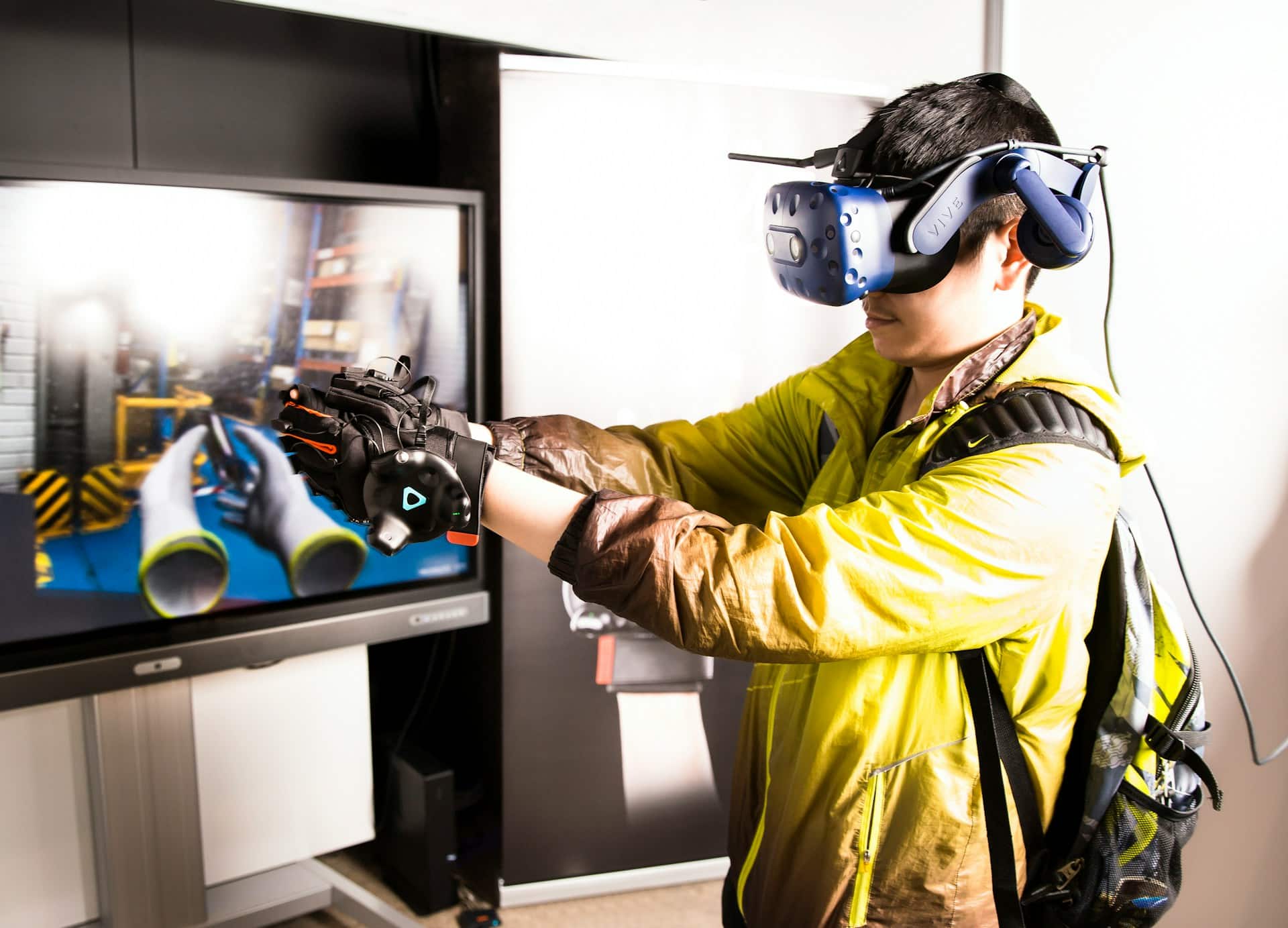How do you optimize the performance of a gaming laptop with an external GPU for VR gaming?

Virtual Reality (VR) gaming has revolutionized the way we experience digital worlds, demanding high performance from our gaming laptops. However, many laptops struggle to meet these demands. This is where an external GPU (eGPU) comes in, offering a significant boost in graphics power. In this article, we'll explore how to optimize the performance of your gaming laptop with an eGPU, ensuring you achieve the best frame rates and refresh rates for an immersive VR experience.
Understanding the Basics: What is an eGPU?
To optimize your gaming laptop with an external GPU, it's essential to understand the basics. An eGPU is an external device that houses a graphics card. It's connected to your laptop via a high-speed interface, typically Thunderbolt, providing additional graphics power.
A lire en complément : What are the steps to configure a QNAP TS-453D NAS for automated nightly backups?
eGPUs are designed to enhance the capabilities of your laptop, allowing it to handle more demanding graphics tasks such as VR gaming. The concept is simple: when your laptop's internal GPU falls short, the eGPU steps in to provide the necessary power. It's like giving your laptop a graphics-focused, performance-boosting sidekick.
Advantages of Using an eGPU
The primary benefit of using an eGPU is the substantial increase in performance. This boost translates to higher frame rates, improved refresh rates, and smoother gameplay. For VR gaming, this means reduced latency and a more immersive experience.
A lire aussi : What are the detailed steps to configure a Ubiquiti UniFi Dream Machine Pro for efficient home network management?
Another advantage is versatility. With an eGPU, you can keep your lightweight, portable laptop for everyday tasks while having the option to connect to the eGPU for high-end gaming or other graphics-intensive applications. This flexibility is especially beneficial for those who use their laptops for both work and play.
Key Components of an eGPU Setup
A typical eGPU setup includes three main components: the eGPU enclosure, the graphics card, and the Thunderbolt cable. The enclosure houses the graphics card and provides power and cooling. It's important to choose an enclosure that's compatible with your laptop and has sufficient power to support your chosen graphics card.
The graphics card is the heart of the eGPU. To get the most out of your setup, select a card that matches or exceeds your gaming needs. High-end GPUs from manufacturers like NVIDIA and AMD are popular choices for VR gaming.
Lastly, the Thunderbolt cable is crucial for data transfer between your laptop and eGPU. Thunderbolt 3 or 4 offers the best performance, ensuring seamless communication between devices.
Setting Up Your eGPU for Optimal Performance
Once you understand the basics, the next step is setting up your eGPU to ensure optimal performance. This involves a few key steps, from choosing the right components to configuring your system.
Choosing the Right eGPU Enclosure and Graphics Card
Start by selecting an appropriate eGPU enclosure. Look for enclosures that offer good ventilation and power output to support high-end graphics cards. Popular models include the Razer Core X and the Akitio Node. Ensure the enclosure is compatible with your laptop's Thunderbolt port.
Next, choose a graphics card that meets your gaming requirements. For VR gaming, you'll need a high-performance GPU. Consider options like the NVIDIA RTX series or the AMD Radeon RX series. These cards deliver the frame rates and refresh rates required for an immersive VR experience.
Connecting and Installing the eGPU
Once you have your eGPU enclosure and graphics card, the next step is assembly. Install the graphics card into the enclosure and connect the power cables. Then, use a Thunderbolt cable to connect the enclosure to your laptop.
After physically connecting the eGPU, you'll need to install drivers. Visit the graphics card manufacturer's website to download the latest drivers. This ensures your system can communicate effectively with the eGPU, unleashing its full potential.
Configuring Your System
Configuring your system correctly is crucial for optimizing performance. Start by adjusting your laptop's power settings to prioritize performance over energy savings. This ensures your laptop utilizes the eGPU's capabilities fully.
Next, update your laptop's BIOS and Thunderbolt drivers. These updates can improve compatibility and performance, ensuring your eGPU setup runs smoothly. Finally, configure your games and VR applications to use the eGPU. Most modern games and VR platforms have settings that allow you to select the preferred graphics card.
Maximizing Performance for VR Gaming
Now that your eGPU is set up, it's time to maximize performance for VR gaming. This involves optimizing your settings and ensuring your system is running at peak efficiency.
Optimizing Graphics Settings
Adjusting your graphics settings can have a significant impact on performance. Start by selecting the appropriate resolution and refresh rate for your VR headset. Higher resolutions and refresh rates provide better image quality and smoother gameplay but require more power.
Next, tweak the in-game settings. Lowering settings like shadow quality, texture detail, and anti-aliasing can improve frame rates without drastically affecting visual quality. Experiment with different settings to find the right balance between performance and visuals.
Monitoring Performance
Monitoring your system's performance is crucial for identifying potential bottlenecks. Use software tools like MSI Afterburner or GPU-Z to track frame rates, GPU usage, and temperatures. This data provides insight into how your system is performing and highlights areas for improvement.
If you notice your GPU running hot, consider improving cooling. Adding external fans or upgrading your eGPU enclosure's cooling system can help maintain optimal temperatures, ensuring consistent performance.
Keeping Drivers and Software Updated
Regularly updating your drivers and software is essential for maintaining peak performance. GPU manufacturers frequently release updates that improve performance and compatibility with new games and VR applications. Keeping your system up-to-date ensures you're taking full advantage of the latest optimizations.
Troubleshooting Common Issues
Even with a well-optimized setup, you may encounter issues. Here, we'll discuss common problems and how to address them to keep your gaming experience smooth and enjoyable.
Connectivity Issues
Connectivity issues can be frustrating, especially when your eGPU isn't recognized by your laptop. Start by checking the physical connections. Ensure the Thunderbolt cable is securely connected to both the eGPU enclosure and your laptop. If the problem persists, try using a different Thunderbolt port or cable.
Sometimes, updating your Thunderbolt firmware and drivers can resolve connectivity issues. Visit your laptop manufacturer's website to download the latest updates. Additionally, ensure your eGPU enclosure's firmware is up-to-date.
Performance Drops
Performance drops can occur for various reasons, from thermal throttling to outdated drivers. If you notice a sudden drop in performance, start by checking your system's temperatures. Overheating can cause your GPU to throttle, reducing performance. Improve cooling by adding external fans or upgrading the cooling system in your eGPU enclosure.
Next, ensure your drivers are up-to-date. Outdated drivers can cause compatibility issues and performance drops. Regularly visit your GPU manufacturer's website to download the latest updates.
Compatibility Issues
Compatibility issues can arise when using an eGPU with certain laptops or applications. Check your laptop's compatibility with eGPUs before making a purchase. Some laptops may have restrictions or require specific BIOS settings to work with eGPUs.
If you encounter compatibility issues with a specific game or VR application, try adjusting the settings. Some applications may require specific configurations to work with an eGPU. Consult the application's support documentation or forums for guidance.
Optimizing Power Settings
Your laptop's power settings can significantly impact performance. Ensure your laptop is set to High Performance mode, which prioritizes performance over energy savings. Additionally, configure your eGPU enclosure's power settings to ensure it's receiving sufficient power.
Optimizing the performance of your gaming laptop with an external GPU for VR gaming is a multifaceted process. It involves understanding the basics of eGPUs, carefully selecting and setting up your components, and fine-tuning your system for the best performance. By following these steps, you can significantly enhance your VR gaming experience, achieving higher frame rates and smoother gameplay.
Whether you're a casual gamer or a VR enthusiast, an eGPU can transform your gaming laptop into a powerful gaming and graphics workstation. Celebrate the support and versatility that eGPUs offer, and enjoy the immersive worlds of VR gaming. With the right setup and optimizations, your gaming laptop can handle even the most demanding VR titles, providing hours of entertainment and excitement.
